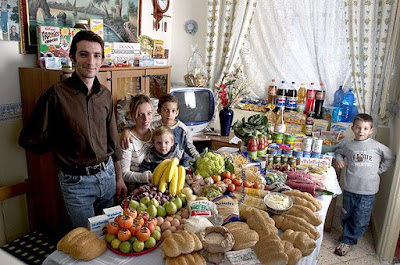
Italy: The Manzo family of Sicily Food expenditure for one week: 214.36 Euros or $260.11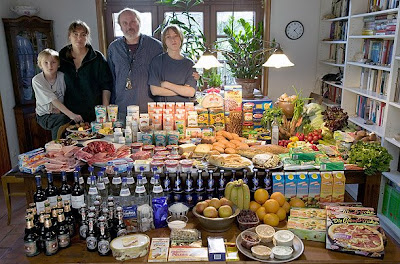
Germany: The Melander family of Bargteheide Food expenditure for one week: 375.39 Euros or $500.07
United States: The Revis family of North Carolina (Sure hope most American families eat more fresh fruits and vegetables and less junk food than this family.) Food expenditure for one week $341.98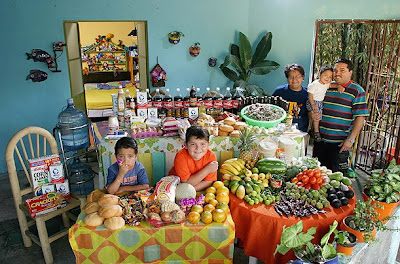
Mexico: The Casales family of Cuernavaca Food expenditure for one week: 1,862.78 Mexican Pesos or $189.09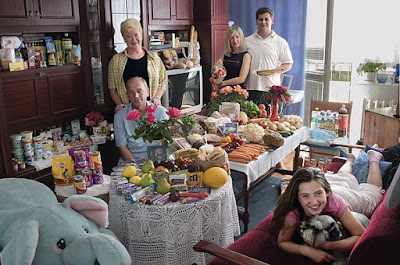
Poland: The Sobczynscy family of Konstancin-Jeziorna Food expenditure for one week: 582.48 Zlotys or $151.27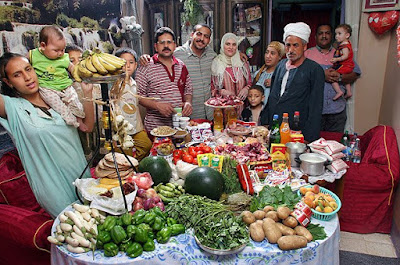
Egypt: The Ahmed family of Cairo Food expenditure for one week: 387.85 Egyptian Pounds or $68.53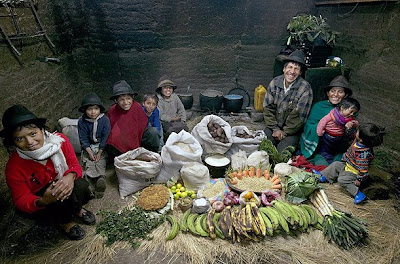
Ecuador: The Ayme family of Tingo Food expenditure for one week: $31.55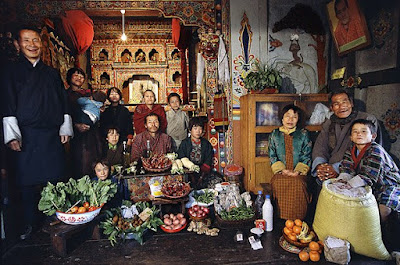
Bhutan: The Namgay family of Shingkhey Village Food expenditure for one week: 224.93 ngultrum or $5.03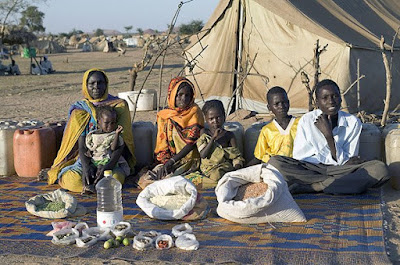
Chad: The Aboubakar family of Breidjing Camp Food expenditure for one week: 685 CFA Francs or $1.23
Thursday, March 27, 2008
Food for 1 week
Posted by MiGlainne at 1:14 AM 1 comments
Labels: Worldwide
Thursday, March 20, 2008
Thai investment
Last week I found 2 interesting articles in the local Thai news paper. One article complained about the increasing living cost in Thailand as everywhere in the world, and especially the price of rice going up, which is food no. 1 of course in Asia. But that was generally speaking not so bad for Thailand as rice is the first export product and it’s Thailand’s second source of income. 80 % of rice cultivated in Thailand is exported intercontinental. Thailand is the first exporter of rice in the world followed by Vietnam. Of course a country like China produces more rice, but needs this rice to feed its own population.
So the increasing prices for rice are quite good for the Thai export economy. This makes more income for the farmers and enough is kept for consumption in Thailand. This rice is then exported to Europe and America but now new markets are opening up in Asia. Rice is now exported to China and countries around Thailand to keep the rising rice prices down. Techniques to get more rice crops a year are being developed and meanwhile this export product is in high demand, keeping the Thai farmers happy.
As rice is only the second source of income it is tourism that occupies the first spot. After the Tsunami in the South tourism has totally recovered and as new parts of the world are discovering Thailand, it is tourism season all year round. Nowadays a lot of People from Eastern Europe (Russia, Poland, Tsech Republic …) and China are visiting Thailand.
Of course money is needed to constantly develop tourism. This year 4.9 billion Baht (1 euro = 47 baht) will be spend to improve some less tourist areas.
The government has 5 mega projects it wants to accommodate for tourist needs.
-Civilisation tourism route
40 Million baht will be used this year to improve the Thai-Burma route, including better highways and easier access to Burma. Next year 225 million will be invested in this project.
-Ecotourism
Environment is a hot issue in Thailand too and about 900 Million will be spend for ecotourism.
-Thailand Riviera
Everyone knows Phuket, Pattaya, Koh Samui, Krabi … But those are only a few spots on the widespread beaches of Thailand, so the Riviera project is inspired by the Spanish coastline. More beaches will be used for tourism development and this will cost 260 million this year with an additional input of 500 million next year.
-Mekong river
One of the biggest rivers of the world (4200 km) passes through Thailand, but only a few resorts can be found around it. This project, which will cost 130 million this year and 420 million next year, will elevate the Mekong river to a new tourist attraction.
-Thai – Khmer route
The ancient Khmer, with Angkor Wat as capital has left a deep print on Thai culture and landscape especially in the poor North-East part of Isan. This region will get 500 million baht for development. Better roads and hotels are surely needed here.
Posted by MiGlainne at 1:58 AM 0 comments
Labels: Thailand




